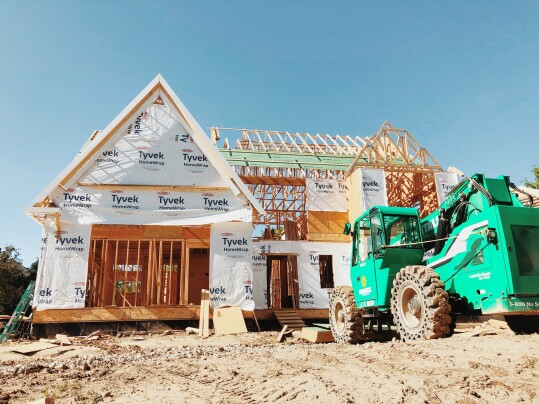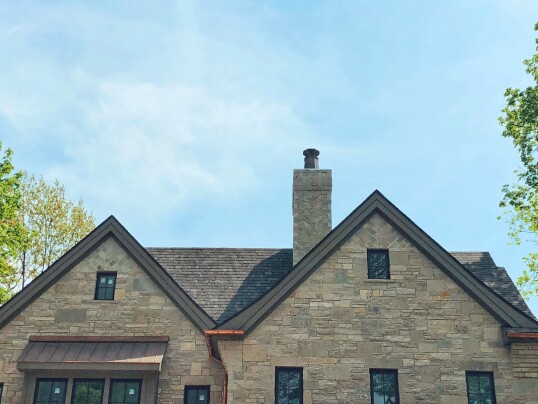The National Association of Realtors keeps a measure of how many contracts to buy homes are signed each month. Its Pending Home Sales Index is considered a good indicator of future home sales, as contract signings typically precede closings by several weeks. In May, the index fell 2.7 percent from the month before, with pending sales down in three of four regions – only the Northeast saw an increase. Lawrence Yun, NAR’s chief economist, says demand remains resilient despite the slowdown. “Despite sluggish pending contract signings, the housing market is resilient with approximately three offers for each listing,” Yun said. “The lack of housing inventory continues to prevent housing demand from being fully realized.” In other words, the lack of homes for sale is the primary reason for slower contract signings. Demand from buyers remains strong and continues to outpace the supply of available, existing homes. (source)
Archive for June 2023
Contract Signings Slow Despite Resilient Demand
Homeownership Rate Shows Surprising Trend
The homeownership rate doesn’t change too drastically from year to year. It hit its record high in the second quarter of 2004, at 69.2 percent and its recent low in 2016 when it fell to 62.9 percent. In other words, the percentage of Americans who own a home has been pretty consistent. Over the past few years, though, there has been an increase. In fact, according to the Census Bureau’s first quarter report, the homeownership rate is currently 66 percent. That’s a fairly significant increase since 2016’s low. But what’s more surprising than the overall increase is the demographic that’s driving the gains. An analysis from Freddie Mac found that between 2016 and today, the rate increased the most for households making below the median U.S. family income. The homeownership rate for those households rose from 48 percent to 53.4 percent during that time. For comparison, the rate for households with a family income higher than the median only increased 0.8 percent over the same period. That means, despite a lower than normal number of affordable homes for sale, Americans are still finding ways to achieve their dream of owning a home. (source)
The Home Price Recovery Is Broad Based
Housing market conditions differ from one location to the next. It’s true within metro areas and certainly from state to state. Buyers in California, for example, will most likely encounter a different dynamic than buyers in Ohio. That’s common knowledge. But while conditions can definitely vary by location, the latest results from the S&P Case-Shiller Home Price Indices, show home prices are climbing almost everywhere. “The ongoing recovery in home prices is broadly based,” Craig J. Lazzara, managing director at S&P, says. “Home prices peaked in June 2022, declined until January 2023, and then began to recover.” According to Lazzara, S&P’s National Composite index rose 1.3 percent in April (repeating March’s performance), and now stands 2.4 percent below its June 2022 peak. The indices – considered among the leading measures of U.S. home prices – not only found national numbers just below last year’s high, they also show month-over-month increases in all 20 major metropolitan markets included in the report. (source)
Purchase Loan Demand Rises For 3rd Straight Week
According to the Mortgage Bankers Association’s Weekly Application Survey, demand for loans to buy homes is rising. Last week, purchase application demand increased for the third straight week, reaching its highest level of activity in more than a month. Joel Kan, MBA’s vice president and deputy chief economist, says new homes are helping buyers find options. “Purchase applications increased for the third consecutive week to the highest level of activity since early May but remained more than 20 percent lower than year ago levels,” Kan said. “New home sales have been driving purchase activity in recent months as buyers look for options beyond the existing-home market.” The increase in purchase activity came during a week when mortgage rates saw mixed results. The average rate for 30-year fixed-rate loans with both conforming and jumbo balances increased from the week before, as did rates for 5/1 ARMs. Rates for FHA loans and 15-year fixed-rate loans, on the other hand, saw declines. (source)
New Home Sales Boom Continues In May
Sales of newly built single-family homes are skyrocketing, according to new numbers from the U.S. Census Bureau and the Department of Housing and Urban Development. In fact, May estimates show sales up 20 percent from where they were last year at the same time and 12.2 percent higher than they were in April. The gains surpassed economists’ expectations and continued an upward trend for the new home market, furthering evidence that buyers are ready and looking to make a move. So why is the market for new homes so much hotter than the existing-home market? The simple answer is supply. There is a lack of previously owned homes available for sale right now and it’s pushing buyers to consider newly built options. The increased demand has helped home builders too, as housing starts also surged during the month, seeing their biggest increase in more than three decades. (source)
What Low Inventory Means For Housing Conditions
These days, there are fewer existing homes for sale and it’s helping to support price growth, according to a new commentary from Fannie Mae’s Economic and Strategic Research Group. The group releases an updated outlook each month covering what they expect from the housing market and overall economy in the days ahead. Their latest release addresses how the low inventory of homes for sale has kept prices strong even in the face of rising mortgage rates. “Housing prices continue to show stronger growth than what was previously expected given the suddenness and significant magnitude of mortgage rate increases,” Doug Duncan, Fannie Mae’s senior vice president and chief economist, says. “Housing’s performance is testimony to the strength of demographic-related demand in the face of Baby Boomers aging in place and Gen-Xers locking in historically low rates, both of which have helped keep housing supply at historically low levels.” Fannie Mae expects demographic factors to keep inventory low for the foreseeable future, which should help prevent sharp price declines in most markets. (source)
Forecast Sees Calmer Days Ahead For Housing Market
Every buyer wants to get the most home for their money. That’s why demand spikes any time mortgage rates fall. We all want to get the best deal possible, and according to a newly updated 2023 forecast from the National Association of Realtors’ consumer website, our chances may be improving. Danielle Hale, the website’s chief economist, says affordability has been challenging so far this year. “The housing market has really seen a double whammy in 2023, with retrenchment in the number of homes for sale coupled with still-high prices and mortgage rates that have kept both first-time and repeat buyers on the sidelines,” Hale said. But while conditions have been challenging during the first half of the year, they should start to calm during the second half of 2023. For one, home prices are expected to remain mostly flat. The website’s forecast calls for prices to fall just 0.6 percent this year. Mortgage rates are also expected to slow as the year progresses, with the updated forecast calling for rates to gradually ease as inflation cools. That means improving affordability conditions for home buyers and a calmer, slightly more affordable housing market in the months ahead. (source)







